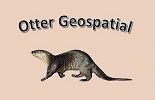If all we had to do was record and store information on where stuff is, we would stick to geographic coordinate systems. But displaying spatial information and extracting distance and area information from it requires the use of projected coordinate systems.
There are thousands of projected systems currently on the books, but it may be that no existing system meets the accuracy and area-of-use requirements of the task at hand. The need to write new projected systems in response to accuracy/area-of-use requirements accounts for the majority of coordinate system proliferation. Another factor is the continuous work being done on measuring the size and shape of the earth. When an earth model (datum) is published that is substantially more accurate than it’s predecessors, coordinate systems based on the new earth model are rolled out.
About Projected Coordinate System Accuracy
In this context, the term “accuracy” is pretty complex. It refers to the distortion introduced by running the system’s projection algorithm. Distance distortion, area distortion, shape distortion and direction distortion all need to fall within acceptable limits for the task at hand. Of course distortion occurring within the area-of-use is all that matters. The folks who design coordinate systems are called geodesists. They juggle the following three design factors to produce the needed accuracy across the system’s area-of-use. Each combination results in a distinct coordinate system.
- The geographic system that the projected system is referenced to
- The projection algorithm used to convert the area of use from curved to flat.
- The parameter values assigned to the projection algorithm
The Projected System’s Geographic Coordinate System
The projected systems we encounter in our work vary greatly in regard to the geographic systems they are referenced to:
- Web Mercator is referenced to WGS84 – not a shock since it’s used by web maps that need to look right no matter where in the world one zooms into
- Many of the County systems we encounter are referenced to one of the enhanced versions of NAD 83 – it makes sense that they want the extra accuracy inherent in these systems because of the land ownership implications of their parcel maps
- Wisconsin Transverse Mercator is referenced to NAD83(HARN)
- The Universal Transverse Mercator systems we encounter are referenced to NAD 83 or NAD 27 depending on their age.
The Projected System’s Projection
When a portion of the earth’s curved surface is flattened (projected), the amount and type of distortion that results is determined by the algorithm used. Different algorithms produce a different mix of distance, direction, area and shape distortion.
- The Web Mercator projection is used for the Web Mercator system.
- The Transverse Mercator projection is often used where the area of use is longer in the N-S direction than in the E-W direction. Examples include the official coordinate systems of the state of Wisconsin and Wisconsin’s Brown and Manitowoc counties.
- The Lambert Conformal Conic projection is often used where the area of use is longer in the E-W direction than in the N-S direction. Examples include the official coordinate systems of the state of Tennessee and Wisconsin’s Marathon County. Lambert is used extensively with State Plane coordinate systems.
- The Oblique Mercator projection is used where the area of use is cattywampus. The only example I’m aware of is the State of Michigan’s official system.
- The Albers Equal-Area Conic Projection is used for most systems whose area of use is the continental United States.
The Projected System’s Projection Parameters
The projected system’s parameters are settings that fit it to the area of use. We can get a sense of how that works by looking at the parameters for the Wisconsin Transverse Mercator system:
- Projection: Transverse_Mercator
- False_Easting: 520000.0
- False_Northing: -4480000.0
- Central_Meridian: -90.0
- Latitude_Of_Origin: 0.0
- Linear Unit: Meter (1.0)
It Could be Worse
The same equation that is responsible for the existence of thousands of projected systems, allows most of us to deal with a limited subset. Our work is usually confined to a modest-sized footprint, right? So, we can ignore all the systems whose area of intended use falls outside our project footprint. The fact that natural resources work generally demands moderate accuracy over moderate-sized project footprints says we can ignore super-accurate and super-generalized coordinate systems. We’ve found that a working knowledge of the following projected coordinate systems is sufficient for the great majority of the work we may be called on to do:
- County systems for counties we are working in.
- Wisconsin Transverse Mercator for regional-scale mapping in the state.
- Universal Transverse Mercator Zone 16 for regional-scale mapping falling between 90° and 84° west longitude.
- USA Contiguous Albers Equal Area Conic for work spanning the contiguous 48 states.

Comments are closed.